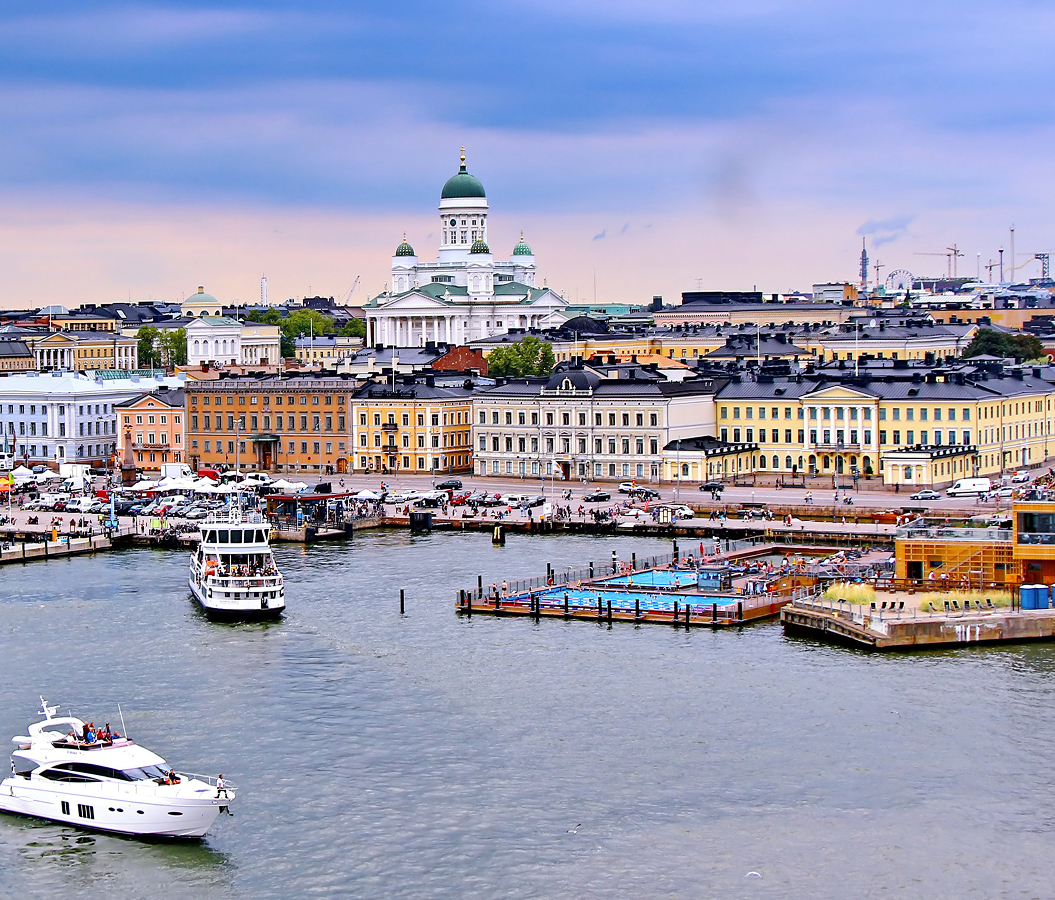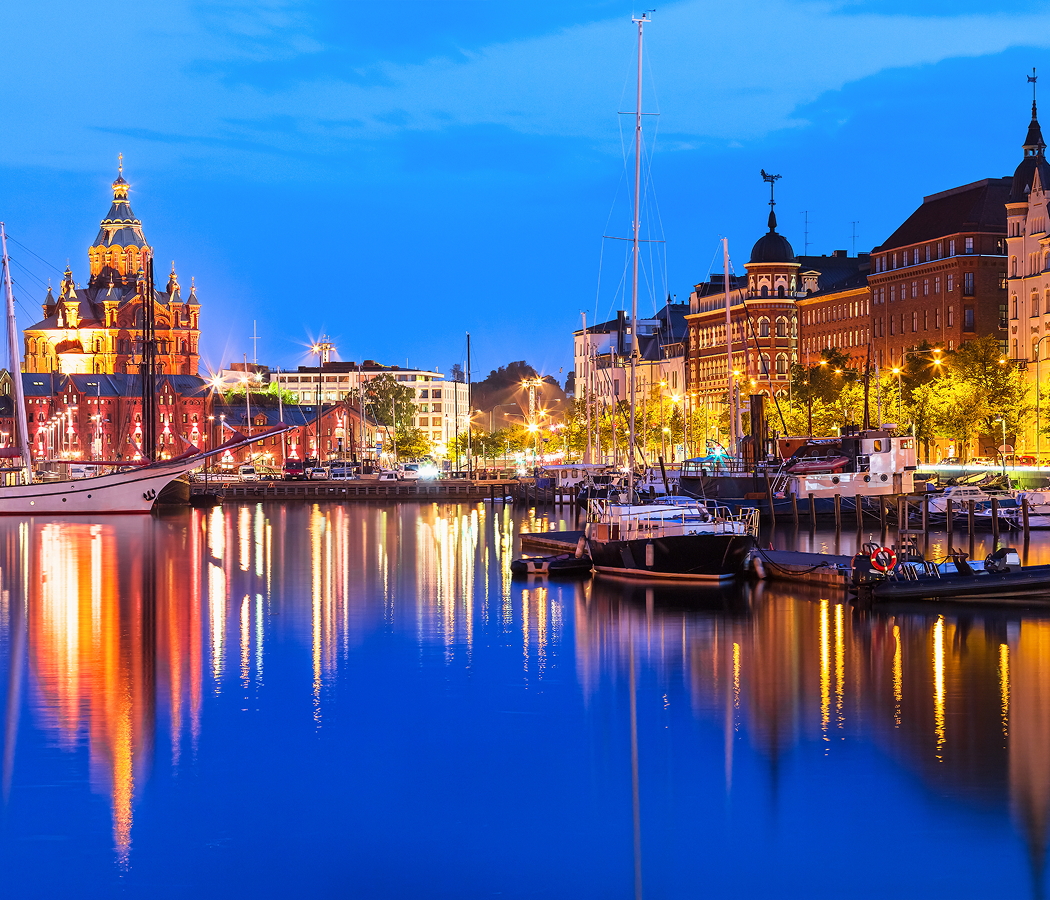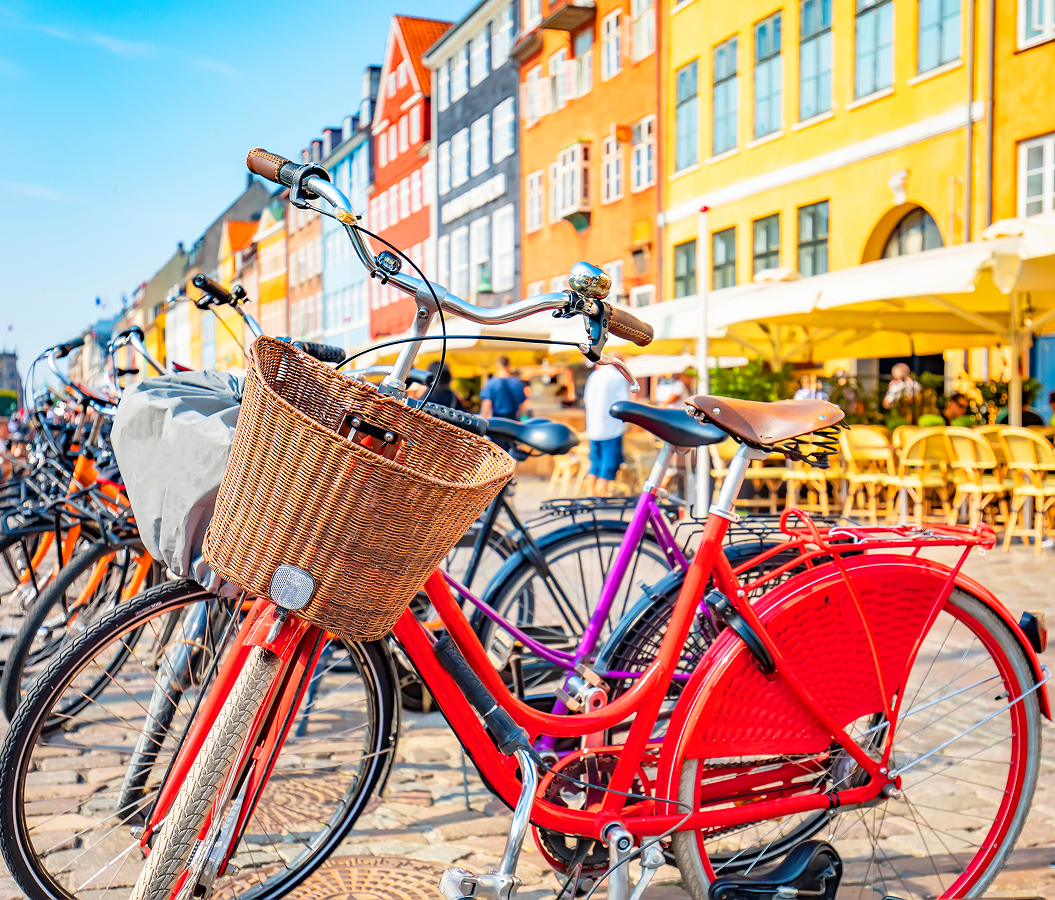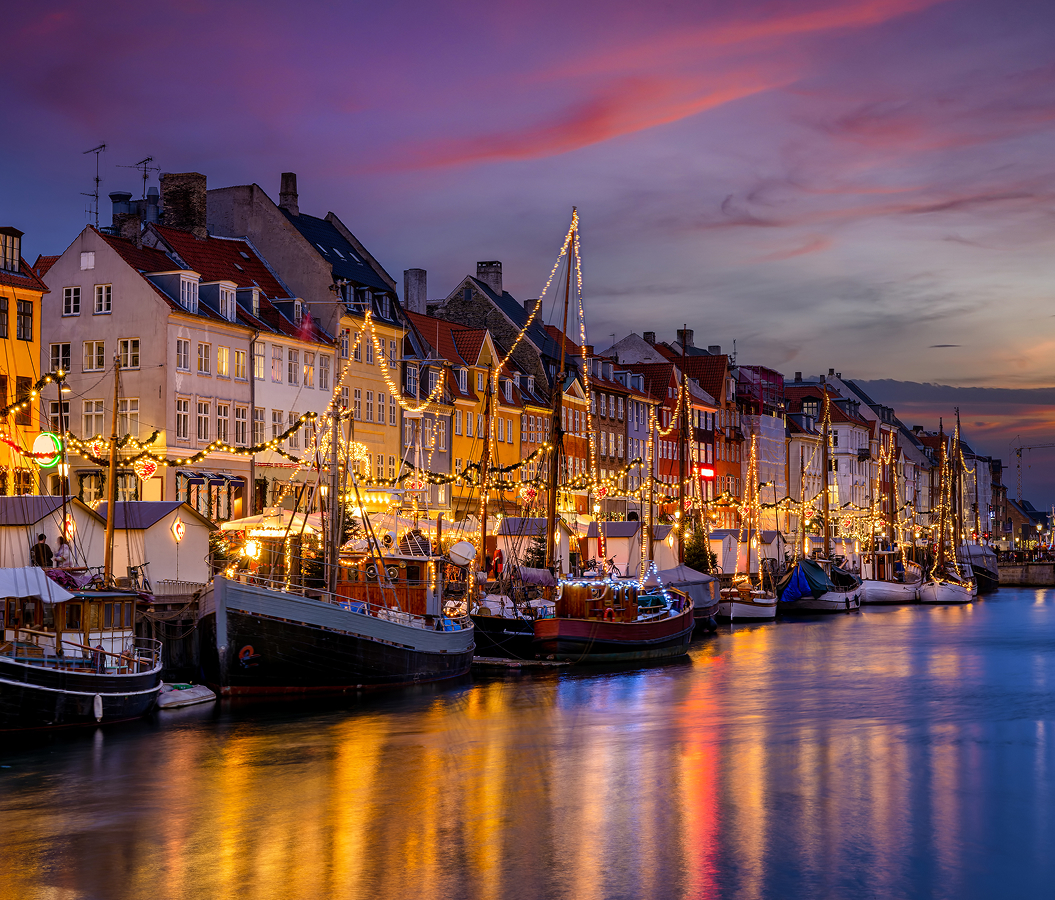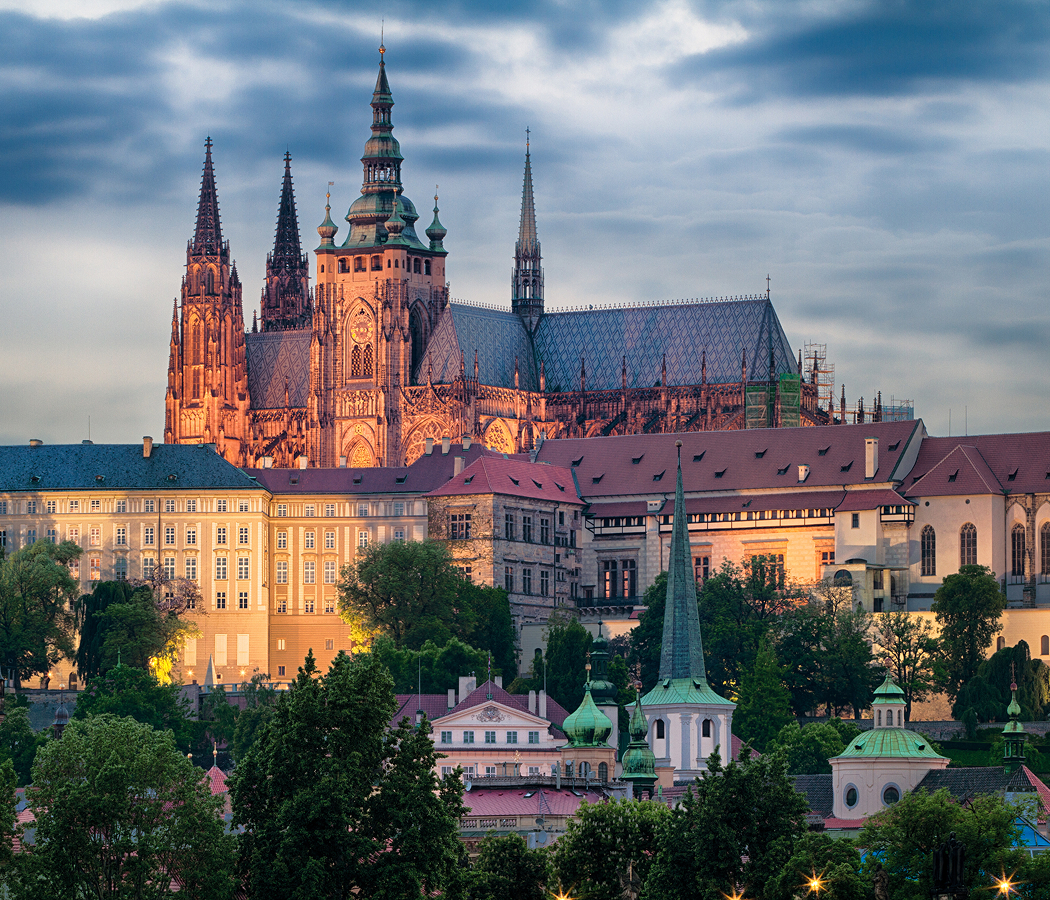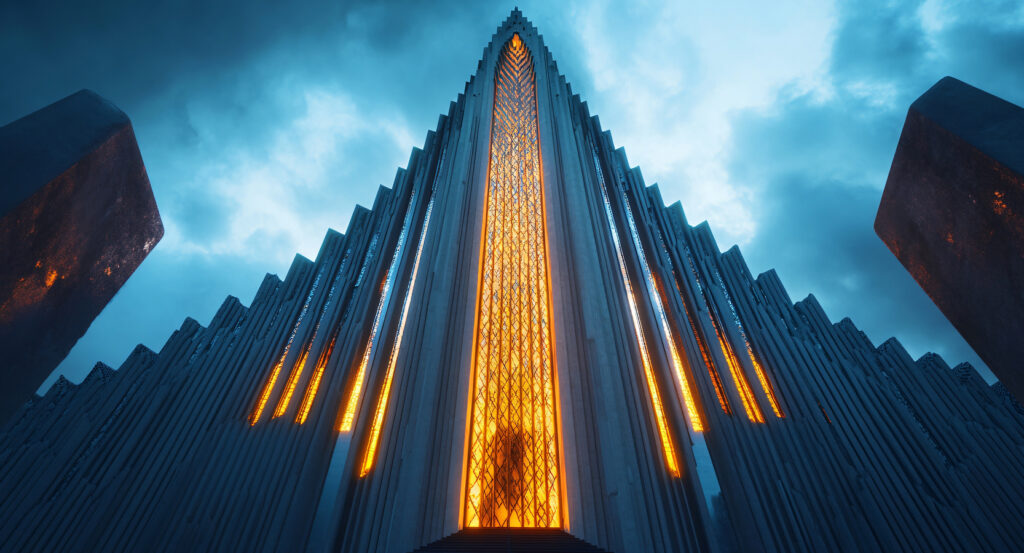
Why you should experience Hallgrímskirkja in Reykjavík.
Rising like a frozen hymn above the skyline of Reykjavík, Hallgrímskirkja is more than Iceland’s most iconic landmark, it’s a sculpted echo of the island itself, a cathedral born from volcanic stone and Nordic imagination.
Designed by architect Guðjón Samúelsson and completed after four decades of patient labor, the church mirrors the basalt columns and lava flows that define Iceland’s raw geography. Its stark façade, ascending in rhythmic, jagged tiers, feels as if it erupted from the earth rather than being built upon it. Step through the doors and the noise of the city fades instantly, replaced by stillness, light, and the subtle reverberation of organ pipes that seem to speak in glaciers and wind. Inside, the design is deliberately austere: white walls, clean lines, a sense of space so vast it feels almost weightless. But the simplicity is deceptive, it’s an architecture of emotion, channeling Iceland’s landscape and Lutheran humility into a singular, transcendent form. As sunlight shifts across the nave, it paints the interior in quiet gradients of silver and gold, creating the sense that the church is breathing. Outside, a statue of Leif Erikson, gifted by the United States in 1930, guards the entrance, a reminder of Iceland’s deep history of exploration and faith. From every angle, Hallgrímskirkja embodies a paradox: both monumental and minimal, ancient and futuristic, rooted in earth yet reaching for heaven.
What you didn’t know about Hallgrímskirkja.
Though it looks timeless, Hallgrímskirkja was a bold experiment when construction began in 1945, a statement of Iceland’s identity in stone during a period of transformation and independence.
Named after Hallgrímur Pétursson, a 17th-century poet and pastor whose Passion Hymns remain among the country’s most treasured works, the church was envisioned not merely as a place of worship but as a national symbol. Samúelsson’s inspiration came from Iceland itself, the basalt cliffs of Svartifoss, the frozen waterfalls, and the endless horizon. It took 41 years to complete, with funding drawn largely from public donations, each króna a gesture of collective devotion. Its tower, standing 244 feet (74.5 meters) tall, became Reykjavík’s compass point long before GPS, visible from nearly every part of the city. Inside, the 5,275-pipe organ built by Johannes Klais of Bonn transforms sound into something nearly architectural, deep, resonant tones that fill the nave like rolling thunder. The acoustics are so precise that visiting musicians from around the world describe it as one of the most responsive spaces they’ve ever performed in. Few visitors realize that Hallgrímskirkja was originally controversial: many locals found its design too severe, too modern, too alien. But over time, it came to define the aesthetic of modern Iceland, the bridge between nature’s power and human creativity. Today it stands as both a place of worship and a national monument, where art, faith, and geology converge.
How to fold Hallgrímskirkja into your trip.
Experiencing Hallgrímskirkja is as much about ascent as admiration, a literal and spiritual climb that reveals Reykjavík from a perspective unlike any other.
Begin your visit early in the morning, when the light is soft and the crowds are few, and the air carries that crisp Icelandic chill that smells faintly of sea and stone. Step inside and let your eyes adjust to the luminous quiet, then take time to listen, sometimes you’ll hear the organist practicing, each note reverberating through the nave like a prayer to the elements. When you’re ready, take the elevator to the top of the tower. As the doors open, the city stretches beneath you in a mosaic of colorful rooftops, snow-dusted mountains, and the deep blue of Faxaflói Bay. The view is staggering, a reminder of Iceland’s isolation and its beauty, Reykjavík below, the wild North Atlantic beyond, and the sky in endless motion. On clear days, you can see all the way to Esja Mountain, its slopes rippling in shades of violet and gray. After descending, linger in the square outside, where buskers play under the shadow of the spire and the bronze Leif Erikson stands eternally facing west. Visit again at dusk, when the church glows like an ember against the cold northern sky, its illuminated tower a modern lighthouse for the city. In winter, the aurora borealis often arcs behind it, transforming the structure into something otherworldly, part cathedral, part cosmic sculpture. Hallgrímskirkja is not just a stop on an itinerary; it’s Iceland’s soul cast in concrete, quiet, immense, and alive with light.
Hear it from the Foresyte community.
Whole building feels like it’s growing out of the earth. You look up and it’s just stone climbing into the clouds. Best view in Reykjavik, no question.
Where meaningful travel begins.
Start your journey with Foresyte, where the planning is part of the magic.
Discover the experiences that matter most.







